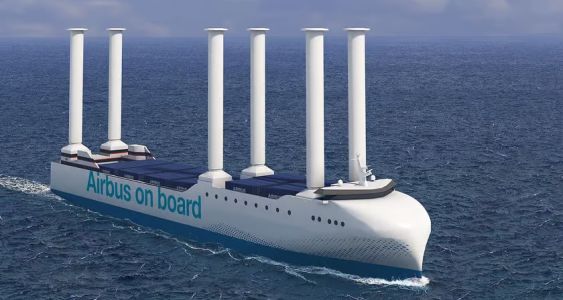 Of the various wind assist technologies available for commercial shipping, which is the most cost-efficient? It is likely, too soon to tell. AIrbus is reported to be trying two different approaches — retrofitting one existing ship with suction sails and building three new ships with Flettner rotors.
Of the various wind assist technologies available for commercial shipping, which is the most cost-efficient? It is likely, too soon to tell. AIrbus is reported to be trying two different approaches — retrofitting one existing ship with suction sails and building three new ships with Flettner rotors.
Last month we posted that the French shipping company Louis Dreyfus Armateurs working with Airbus, which charters one of its ships, will install Bound4Blue suction sails on a ro/ro cargo vessel as a test of the technology, the first-ever fixed suction sail installation on a ro/ro. The suction sails will be installed on the Ville de Bordeaux ahead of a six-month performance monitoring period starting in early 2024.
Last week, Airbus announced that it is again partnering with Louis Dreyfus Armateurs to build three new ro/ros featuring low emissions dual fuel capabilities and wind assist technologies. These ships will feature six Flettner rotors per ship in addition to two dual-fuel engines. The engines will run on either marine diesel or e-methanol. Additionally, routing software will optimize the vessels’ journey across the Atlantic, maximizing wind propulsion and avoiding drag caused by adverse ocean conditions.
Airbus’ goal is to reduce emissions from its Atlantic fleet by 50 percent by 2030 compared to a 2023 baseline. The new fleet is projected to reduce average annual transatlantic CO2 emissions from 68,000 to 33,000 tones by 2030. It is part of Airbus’ commitment to reduce its overall industrial emissions by 63 percent by the end of the decade compared to 2015 as a baseline.

It’s nice to see actual, real world, testing of these two different wind propulsion systems!
The acquisition of real world data trumps theoretical data, and sales hyperbole every time..